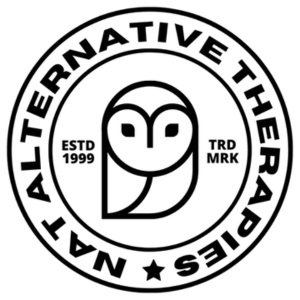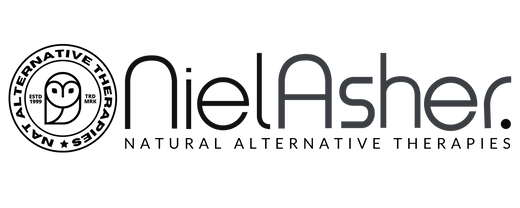How to Build a Stretching Routine That Works For You
Fitness isn't just about being slim, or having well defined muscles. Just like eating a balanced diet, you also need a balanced fitness regime - and stretching is right at the heart of it!
So what makes a person physically fit? Well, it's a combination of flexibility, strength, power, speed, endurance, balance, co-ordination, agility and skill.
Too much of one thing is no good if you ignore all the rest. Take American Football, or Rugby, for example.
Both sports rely heavily on strength and power. However, if they don't combine these disciplines with flexibility training, or skill drills, then the participants could seriously hurt themselves.
Same with gymnastics. A gymnast may spend a lot of time concentrating on strength and flexibility, but it's through a balanced training programme that they also gain power, speed and endurance.
Flexibility is a very important part of being physically fit. But, just because you are particularly flexible one-way, doesn't mean that your entire body is the same.
That's why flexibility should be measured according to each individual joint or muscle group, and not by your body as a whole.
Tight and Stiff Muscles
There's nothing like having a sore back or neck to make you feel old.
We get them through a lack of flexibility which causes our muscles to become tight and stiff, limiting our movements.
If left alone, simple actions like tying your own shoelaces can become extremely difficult, if not impossible.
If a muscle is tight then it can't work correctly. A muscle that cannot contract and relax properly will end up losing strength, power and efficiency during physical activity.
What's more, in a very small percentage of cases, muscles that are tight and stiff can even restrict blood circulation.
Good blood circulation is crucial in helping your muscles get enough oxygen and nutrients. Poor circulation can result in increased muscle fatigue and, ultimately, will impede its ability to repair itself and recover from strenuous exercise.
Muscular discomfort, loss of muscle performance, an increased risk of injury, and, a greater likelihood of repeated injury... all of this can be avoided by increasing flexibility.
Muscles Need to be Flexible
Your muscles need to be flexible in order to work their best. We achieve this by stretching.
However, there are a number of internal and external factors that we should be aware of, as these can work against us to decrease flexibility.
Internal factors include bones, ligaments, muscle bulk, muscle length, tendons and even your own skin; they can all restrict your amount of movement, one way or another. Take your leg, for example.
You can't bend forward beyond a certain point because there are bones and ligaments in the knee joint, holding it in place.
There are external factors too. These include age, gender, temperature, restrictive clothing and any injury or disability you might have; all working together to help contribute to a loss in muscle flexibility.
Flexibility and Ageing
Sadly, with each passing year, our muscles and joints become stiffer and tighter.
It's a combination of our bodies getting older and the fact we move around less.
But, although we can't stop the ageing process, we can certainly reduce its effect on our flexibility.
Time, patience and a lot of care is all you need. Do this and there's no reason why you can't lead a fit and active lifestyle well into your 80s and beyond.
Breaking Old Holding Patterns
Stretching is one of the best ways to improve flexibility. It helps:
- Improve your range of motion
- Increase your power
- Diminish post-treatment soreness
- Reduced fatigue
By stretching the muscles with trigger points, or the muscles you are trying to strengthen, you will break old holding patterns, help to restore range of motion and prevent yourself from further injury.
What's more, gently stretching after a trigger point treatment session, or after strengthening exercises, can help reduce soreness and keep your muscles long and flexible.
Types of Stretching
There are many different ways to stretch, but two techniques really stand out from the rest.
The first is passive / static stretching which you can do at home, at work or even when waiting for a bus.
The second is called Proprioceptive Neuromuscular Facilitation (PNF) which is slightly more advanced but can deliver great results, especially when working with a partner.
Remember, stretching is far more effective when your muscles are warm. 10 minutes of jumping around, or a hot shower, before you start can really make a difference.
Passive/Static Stretching Technique
This technique is great for beginners:
1. Firstly, place your body in a position where you are comfortable
2. Then, slowly and carefully begin to stretch your muscle
Remember, do not force the stretch. If you feel pain, then stop.
1. Hold the stretch for at least 20 seconds, but no more than one minute, in order to allow your muscle to lengthen
2. Take a deep breath then relax
3. Slowly come out of the stretch and rest for about a minute
4. Repeat the stretch up to three times
5. Do this two or three times daily
Tip: To increase your muscles' efficiency, stretch the opposite muscle straight afterwards.
Proprioceptive Neuromuscular Facilitation (PNF)
This technique can not only improve muscle strength, it can give permanent results.
There are several forms of PNF stretches, such as the "hold/relax stretch" or the "contract/relax" stretch. Both are easy to do and can deliver great results:
1. Get into a comfortable position and stretch your muscle
2. Tense your stretched muscle for five or six seconds while your partner holds your joints in place
3. Stretch the muscle again for approximately 30 seconds
4. Relax for half a minute
5. Then repeat two to four times more (but for no longer than 10 minutes)
Always Follow These Rules
Stretching is simple and the effects can be wonderful. Just make sure you follow these simple guidelines:
1) Any stretching programme should last for at least four to six weeks, unless otherwise specified by your practitioner, doctor, or physical therapist. But why stop there? Continue your exercises after your recovery and you'll be helping yourself maintain a healthy, active life in the future.
2) Why not set up a regular time at home for stretching the affected muscle? You could do it during the adverts on the television, or while waiting for the kettle to boil. All it takes is a few minutes, two or three times a week and you'll find that you'll maintain strength and achieve the optimum range of movement. We would advise you to keep a diary of any stretches that aggravate your trigger point symptoms.
3) Always warm up properly beforehand. Just 10 minutes of low-impact activity, such as walking, is all it takes to get your muscles ready.
4) Never ignore pain. If you feel severe pain during or after a stretch, then you should stop. Overzealous stretching can cause new trigger points to emerge. But, by moving gradually from one stretch to another, and listening to your body, you will be okay.
Remember, pain while you're resting can mean that the trigger points are active. If this happens to you, the best thing is to submerge the effected area in warm water, while making small rhythmic movements. Or, you can combine moist heat, such as steam, and a gentle massage.
Don't Overdo It!
Do not ignore pain. It is important to be aware that overzealous stretching can reactivate latent trigger points.
The advice is to progress gradually from one stretch to another and listen to your body; different stretches work different types of fibre and afford the brain a better sense of self.
You should not feel severe pain during or after a stretch. In general, if a stretch activates your trigger point pain, it should be stopped.
This blog and video is intended to be used for information purposes only and is not intended to be used for medical diagnosis or treatment or to substitute for a medical diagnosis and/or treatment rendered or prescribed by a physician or competent healthcare professional. This information is designed as educational material, but should not be taken as a recommendation for treatment of any particular person or patient. Always consult your physician if you think you need treatment or if you feel unwell. Do not attempt to replicate these techniques unless they fall within your professional scope of practice.

The Gold Standard in Continuing Education and Online Training
Massage Therapy, Sports Massage, Strength and Conditioning, Stretching, Mobilisation and Manipulation, Cranio-Sacral Therapy, IMS Dry Needling, Acupuncture, Acupressure, Trigger Point Therapy, IASTM, Resistance Training, Bowen Therapy, Vestibular Rehabilitation Therapy, Podiatry, Oncology Massage, Sports Nutrition, Traditional Chinese Medicine, Somatic Therapy, Prenatal Bodywork and Massage, Anatomy, Biomechanics, Clinical Reasoning, Pilates, and Yoga.



















